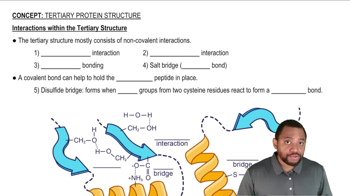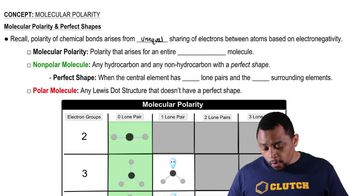Collagen contains an amino acid that is a modified form of the naturally occurring amino acid.
a. Name the natural amino acid.
 Verified step by step guidance
Verified step by step guidance Verified video answer for a similar problem:
Verified video answer for a similar problem:



 2:7m
2:7mMaster Tertiary Protein Structure Concept 1 with a bite sized video explanation from Jules
Start learning